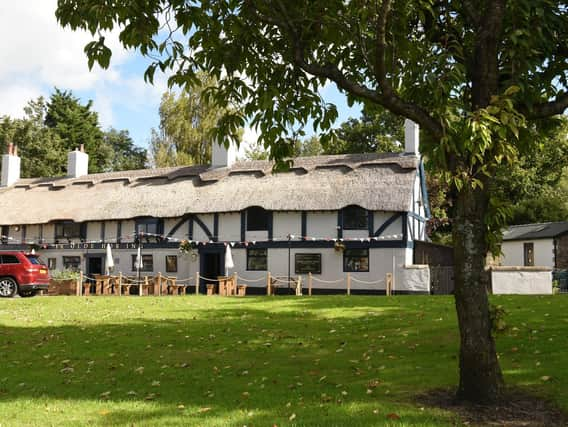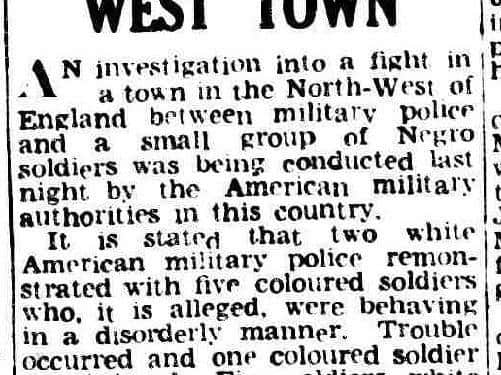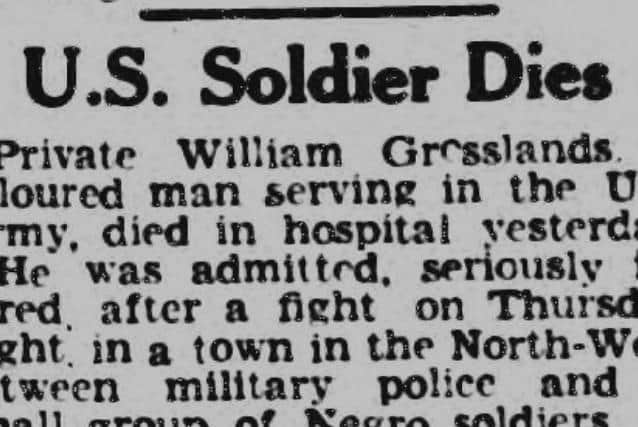Lancashire history: How the Battle of Bamber Bridge unfolded


During the Second World War there was a large US military camp based in Bamber Bridge.
The town hosted American servicemen from the 1511th Quartermaster Truck regiment, part of the 8th Air Force.
Advertisement
Hide AdAdvertisement
Hide AdTheir base, known as Adams Hall, was situated in the Mounsey Road area, part of which still exists now as home to the local Air Cadets Training Corps. A US Military Police Contingent was also located in the town.


During the war years, US Armed Forces were still racially segregated, and the soldiers of 1511 Quartermaster Truck were almost entirely black, while all but one of the officers were white, as were all the MPs and leadership in the military unit was considered to be poor.
Tensions were intensified by race riots in Detroit earlier that week and an uneasy period in the town was probably the results of these racial tensions.
The people of Bamber Bridge on the whole supported the black troops, and when American commanders on, what was considered a knee-jerk reaction, demanded a colour bar in the town, many of the pubs reportedly posted Black Troops Only’ signs on their doors.
Advertisement
Hide AdAdvertisement
Hide AdThis was probably seen as the blue touch paper to a potential firecracker and all that was required to set it off was a match - and what happened next proved to be that source of ignition.


On the night June 24, 1943, a number of black soldiers were drinking with Bamber Bridge townspeople in Ye Old Hob Inn, in Church Road. After last orders were called at 10pm, several soldiers attempted to buy more beer and were refused. Two passing MPs, were alerted by the officers and when they arrived they attempted to arrest one soldier, a Private Eugene Nunn, who was improperly dressed and did not have a pass.
An argument ensued between the black soldier and the white MPs, with local people and British servicewomen siding with Nunn and the small group of comrades he was with.
One soldier, Private Lynn M. Adams, advanced on the MPs with a bottle, and Corporal Roy A. Windsor drew his gun in response.
Advertisement
Hide AdAdvertisement
Hide AdBlack Staff Sergeant William Byrd was able to defuse the situation, but as the MPs left Adams threw his beer at their jeep. After driving away, the MPs picked up reinforcements and then caught up with the unit’s officers. The officers were unable to help, and told the MPs to do their duty and arrest the soldiers.
The MPs intercepted the soldiers on Station Road (pictured, inset) which was the only route back to the base. What happened next is disputed.
Two black soldiers, who were not involved in the violence, claimed that the MPs threatened the soldiers, shouting “By God men, come on!”, while a British Special Constable who was nearby said the MPs were initially peaceful and stopped to talk to Adams who was drinking in the road. As they approached, punches were thrown and a general melee broke out.
One of the MPs drew his gun and fired, hitting Adams in the neck. The crowd scattered and jeeps arrived to rescue the wounded, although it was reported that the officers refused to take the black soldiers to hospital.
Advertisement
Hide AdAdvertisement
Hide AdAs the injured soldiers returned to the base, rumours began to spread that the MPs were out to shoot black soldiers, and panic spread around the base. A few black soldiers slipped out, perhaps hoping to find the MPs and get revenge, but the majority stayed on base. It fell to the acting commander of the camp, Major George C. Heris, to calm the situation.
Lieutenant Edwin D. Jones, the only black officer in the ranks, was able to persuade the soldiers that Heris would be able to round up the MPs and see that justice was done.
At midnight, several jeeps full of MPs arrived at the camp, including one improvised armoured car armed with a large machine gun.
A general panic broke out, resulting in black soldiers arming themselves from the camp gun room. Around two-thirds of the rifles were taken, and a large group of men left the base in pursuit of the MPs.
Advertisement
Hide AdAdvertisement
Hide AdThe black soldiers warned the townspeople to stay inside and began shooting at the MPs, who returned fire. The darkness meant both sides were confused and in reality few shots were fired.
However, one black soldier, Private William Crossland, was killed, and four people were wounded (two soldiers and two MPs). Shooting continued until around 4am the next morning.
Eventually, the soldiers returned to the base, and by the afternoon all but four rifles had been recovered.
The violence left one man dead and seven people (five soldiers and two MPs) injured. At the subsequent court martial, 32 black soldiers were found guilty of various crimes including mutiny, seizing arms, rioting and firing upon officers and MPs. Sentences ranged from three months to 15 years but these were all reduced on appeal, with the poor leadership and use of racial slurs by MPs considered mitigating factors.
Advertisement
Hide AdAdvertisement
Hide AdGeneral Ira C. Eaker, commander of the Eighth Air Force, placed the majority of the blame on the white officers and MPs and, to prevent such an incident happening again, he combined the black trucking units into a single special command.
The ranks of this command were purged of inexperienced and racist officers, and the MP patrols were racially integrated. Morale among black troops stationed in England improved, and the rates of courts-martial fell.
Although there were several more minor conflicts between black and white American troops in Britain during the remainder of the war there was never any further incidents as serious as the one that took place in Bamber Bridge.